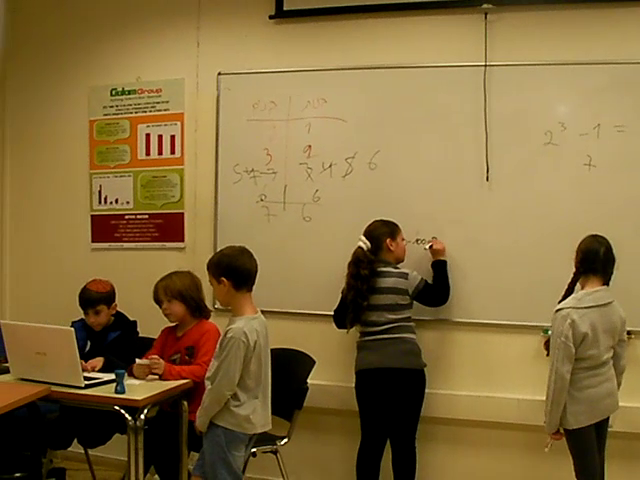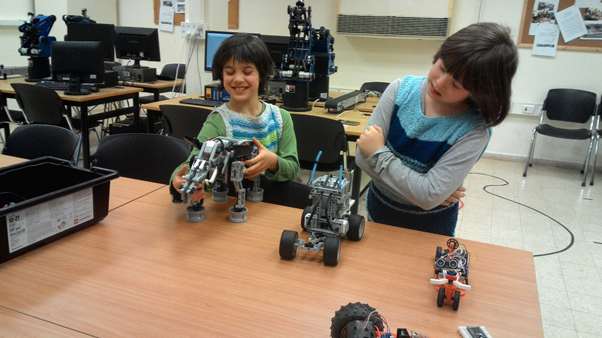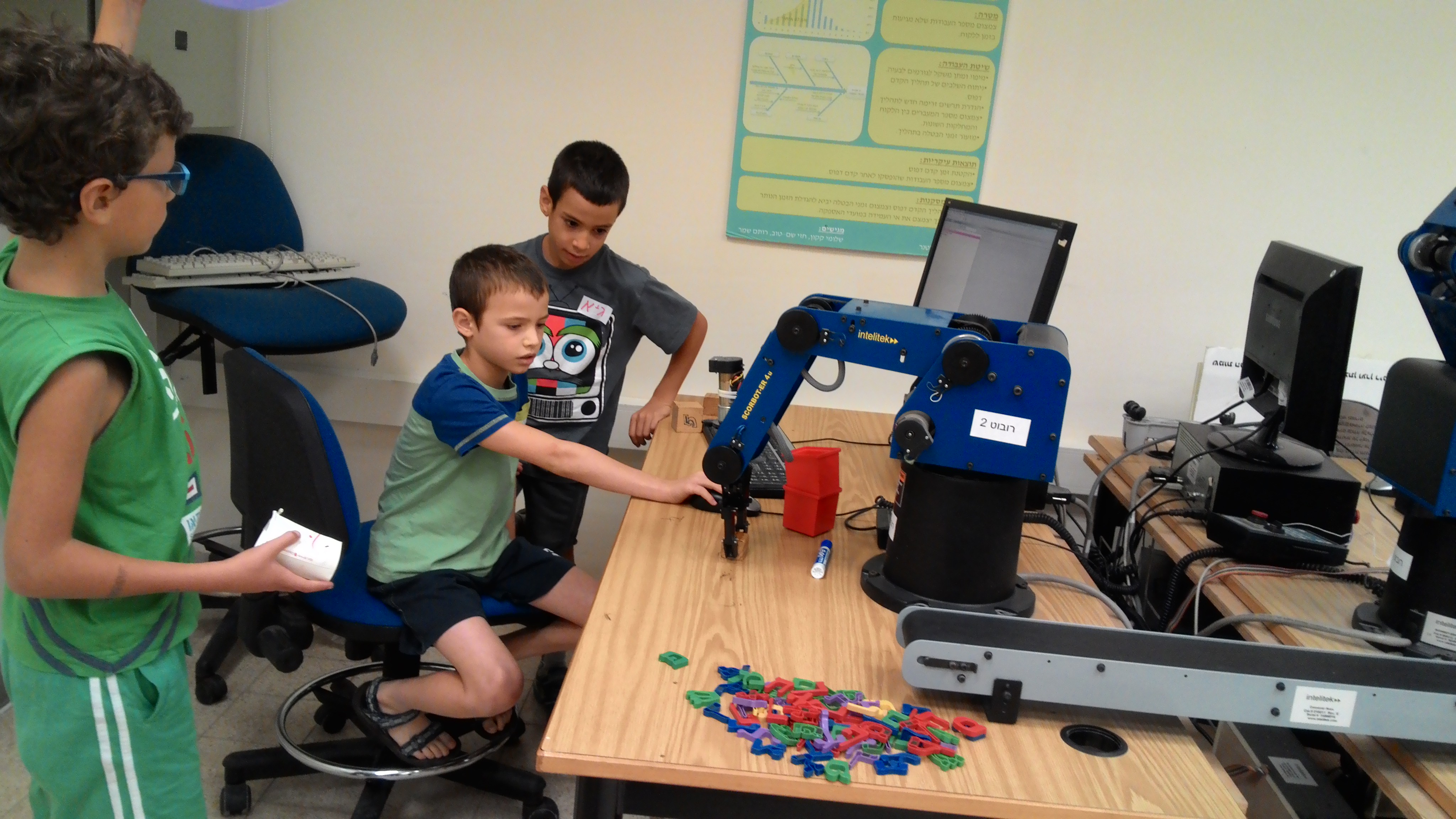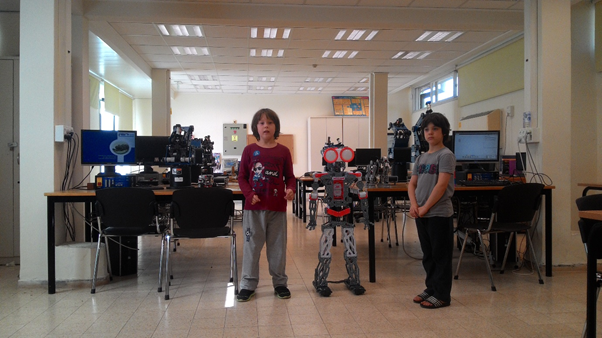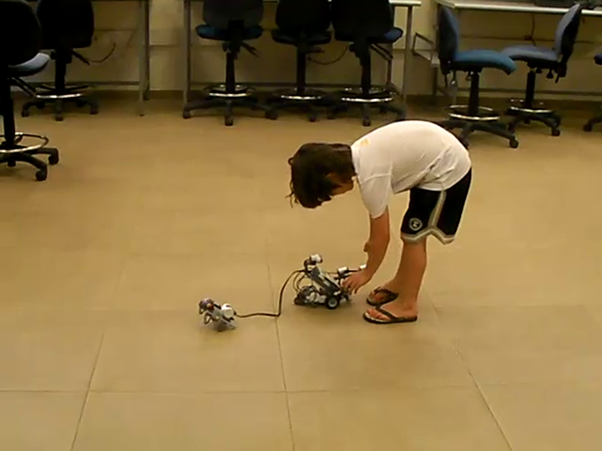Junior college
Junior college exists since 2012 as a College-preparation School for Special and Gifted Children. In this college small groups of gifted children and children with special needs are taught STEM and English, adhering to the national curriculum published by the Israeli Ministry of Education, though not necessarily at the chronological order and age of the standard program.
It is based on an Organic non-algorithmic paradigm (OKE) for education. A flexible model of organic paradigm allows us to develop real life ICT learning environments which are much smarter and to a much higher degree simulate the most vital aspect of the teacher's expertise – the pedagogical know-how.
In 2018 Rubin family donated money to the lab to create a new "Robotic Junior college Program named after Nehemia Rubin". The purpose of this program is to open the field of robotics education to the Youth at Risk and new immigrants, to increase academic achievement of pupil in STEM and to improve social mobility in the future.
Dewey-Montessori Laboratory Experimental School
Built as labs – one central and cluster of STEM labs on infrastructure of cluster of same-locality educational institutions for all levels and ages of students K-Uni: preK-K-robotics-lab in kindergartens, primary schools robotics-lab, 4-12 robotics-lab in Science Center, preK-Uni AIR lab in college.
If engineering lab and scientific endeavour, with much more verbal and mental communication to this point.
In the spirit of Dewey, engineering and scientific dialogue is at the center of life of the student much more than his work on the experiments and projects. The theory is very important, although it is an engineering theory. As a young engineer the student all the time is immersed in the process (an endless cycle of prototyping (requirements-design-implementation-testing-feedback-improvement). It is the triality of the three tech-creative-innovation hypostases: theory-engineering-technology (know-how). This is a more sophisticated version of Dewey practice-theory-practice arc.
The headquarters lab is situated inside a college engineering school and serves all ages of students. It is built as four spaces: theory and meetings (tables and chairs with whiteboards and projectors and screens for presentations and lectures).
Montessori-Dewey Lab School is a pilot school under the auspices of the Ruppin Academic Center. It was established in 2012 with a very small number of students and programs, and grew substantially since then.
The didactic and pedagogical philosophy at the heart of the school is an organic approach. It is a constructive synthesis of the two seminal educational paradigms – the revolutionary approaches of John Dewey and Maria Montessori. Though both are very similar in their anti-frontal-teaching basic approach, they are sometimes seen as contradictory. Both advocate the crucial role of the student, less teaching more learning. Like Vygotsky they both are constructivist, i.e. knowledge and character are not taught, but individually constructed by the student in his own mind, in his own way, at his own pace. Yet one is more about individual skills, usually more STEM, and the other is more about moral and social skills, development of a responsible and moral adult member of society. Like Vygotsky, one is more group oriented, the other more individual. Still, we don't see here an oxymoron, but rather two sides of the same coin. With organic approach, the seeds of truth of both could, and should, be incorporated into the school.
Both had created a novel model of Laboratory School and realized it in a real-life pilot school. John Dewey created his Laboratory School of the University of Chicago in 1896. This evolved into today's highly successful University of Chicago Laboratory Schools, with more than 2000 students, with emphasis on continuous education starting with pre-K and K-12 that painlessly evolve into higher education. High school students take university courses as part of their studies. University of Chicago Laboratory Schools are rated fourth in the US.
Maria Montessori created her Casa dei Bambini in Rome in 1907 as part of Franchetti Foundation, known later as Centro Studi e Formazione Villa Montesca, and today as Fondazione Centro Studi Villa Montesca. After her pupils, many of whom were before starting the Montessori school were lagging in their development and education, and some were being diagnosed as retarded, won mathematics Olympiad, the Montessori model became extremely popular. The Journal of Montessori Research Global Diffusion of Montessori Schools report states that it found at least 15,763 Montessori schools in 154 countries worldwide, (with the largest number of Montessori schools in United States, China, Thailand, Germany, Canada, and Tanzania; United States, Thailand, Netherlands, and India have the largest number of government-funded or public Montessori programs).
One formulation of the Montessori principles could be:
- recognizing the interest and needs of students, allowing their personal choice;
- reinforcing self-motivated, active and autonomous, as well as collaborative, learning;
- individual, student led pace and scenario, including learning by mixing students of different ages;
- facilitating the manipulation and understanding of materials;
- developing self-control;
- respecting freedom and teaching responsibility;
- encouraging creativity;
- encouraging trial-error techniques in tasks, among other characteristics.
(similar to a degree to Gasco-Txabarri and Zuazagoitia, 2022)
The school is a unique attempt to create a synthesis of the two major paradigm-shifting schools, but to adapt them to the realities of 21st century, with stronger emphasis on creativity and innovation, AIR, engineering, 21st century skills, netizenship and advocacy of children's rights and agency. It is much more intricate in goals and structure, and more ambitious in goals. It incorporates the tremendous body of knowledge and know-how of research and practical results of more than a century of education (with dyophysitism of science and practice).
Built as labs – one central and cluster of STEM labs on infrastructure of cluster of same-locality educational institutions for all levels and ages of stude-nts K-Uni: preK-K-robotics-lab in kindergartens, primary schools robotics-lab, 4-12 robotics-lab in Science Center, preK-Uni AIR lab in college.
In the spirit of Montessori, the look and feel is intended to be as free as possible, as much student controlled as is possible in an engineering and education lab. But in contrast to Montessori's home the atmosphere is much more that of engineering lab and scientific endeavour, with much more verbal and mental communication to this point.
In the spirit of Dewey, engineering and scientific dialogue is at the center of life of the student much more than his work on the experiments and projects. The theory is very important, although it is an engineering theory. As a young engineer the student all the time is immersed in the process (an endless cycle of prototyping (requirements-design-implementation-testing-feedback-improvement). It is the triality of the three tech-creative-innovation hypostases: theory-engineering-technology (know-how). This is a more sophisticated version of Dewey practice-theory-practice arc.
The headquarters lab is situated inside a college engineering school and serves all ages of students. It is divided into four spaces: theory and meetings (tables and chairs with whiteboards and projectors and screens for presentations and lectures).



